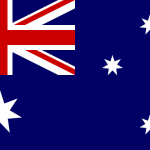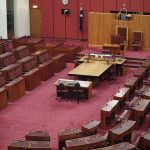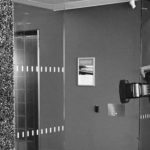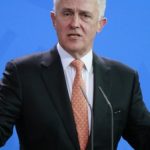Hanson’s Burqa Stunt – Justified or Offensive?
If you haven’t caught the story, Senator Hanson wore a full Burqa to question time in the Senate this week, calling for a ban on the Islamic dress.
It’s not the first time Hanson has had ‘Banning the Burqa ’on the agenda at question time, and the Federal Government has routinely rejected her calls.
Hanson has been widely criticised in the wake of the stunt, but she has steadfastly defended her actions, saying it was an extreme way of highlighting what she sees as a major security threat.
Hanson claims that when she walked into the Senate, security staff did not ask to see her face, but accepted the word of her fellow senator Brian Burston, who vouched for her identity.
Security threat
Hanson says she also wanted to emphasise the point that while the government is spending $16 million dollars upgrading security at Parliament House, she was nevertheless allowed through, in a full burqa, with no checks in place.
What’s more, she says, the vast majority of Australians want the Burqa and the Niqab banned here. She points out that the burqa is already banned from various public places in France, Belgium, Egypt and Bulgaria.
There are about half a million Australians who follow the Islamic faith. Attorney General George Brandis says that Hanson’s stunt not only mocked the sacred religious garments of a community, but also put community relations at risk.
He says Australia’s security agencies and police have advised that it’s vital for their intelligence and law enforcement to work cooperatively with the Muslim community, not put them offside with offensive comments and stunts about their faith and their beliefs.
Other senators including Greens leader Richard Di Natale congratulated Senator Brandis for a “strong, impassioned, and personal response” to Ms Hanson’s stunt. Senator Nick Xenophon described Hanson’s stunt as “toxic behaviour”.
Meanwhile, conservative senator Cory Bernardi said he was “literally scared” when he saw Senator Hanson wearing the burqa in the Senate chamber. He says he agrees with the point Hanson was making about burqas, but disagrees with her decision to wear the clothing in Parliament.
People need to have their say
Hanson claims we need to have a debate about whether to ban the burqa, and that every day Australians “will eventually have their say at the ballot box.”
And she may have a point – a poll taken by Channel 9’s Today resulted in 59% of respondents saying they supported her stunt.
The rise of Islamaphobia
But high profile acts like this, and biased media reporting, have contributed to the rise in Islamaphobia here.
Last month, Charles Sturt University released the Islamaphobia in Australia report. The study focused on 243 verified incidents reported to the Islamophobia Register of Australia between September 2014 and December 2015.
The report identified that “on average the victim tends to be an Australian Muslim woman and the perpetrator tends to be a male”, and that a “significant number of incidents take place in the presence of children.”
The report also reveals that 98 percent of perpetrators identified as Anglo-Celtic, and that 60 percent of the physical assaults took place in NSW – followed by Victoria with 26.7 percent. It also found that in 75 percent of the reported cases, nobody intervened.
This data, and the inflammatory rhetoric and actions of politicians like Hanson, suggest that Islamaphobia is becoming ‘normalised’ in Australia.
So perhaps the issue that really needs to be discussed is not religious dress, but how we can deal with the rise in Islamaphobia and protect innocent victims.







